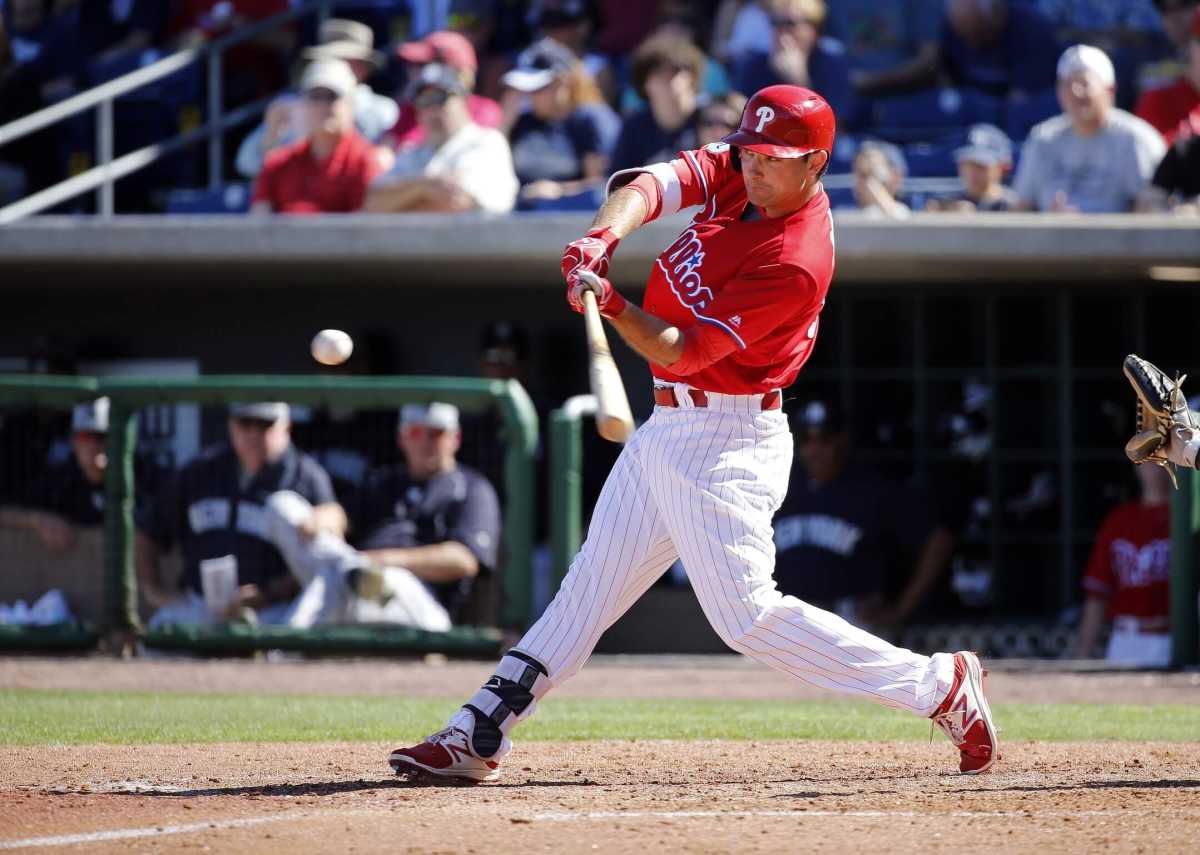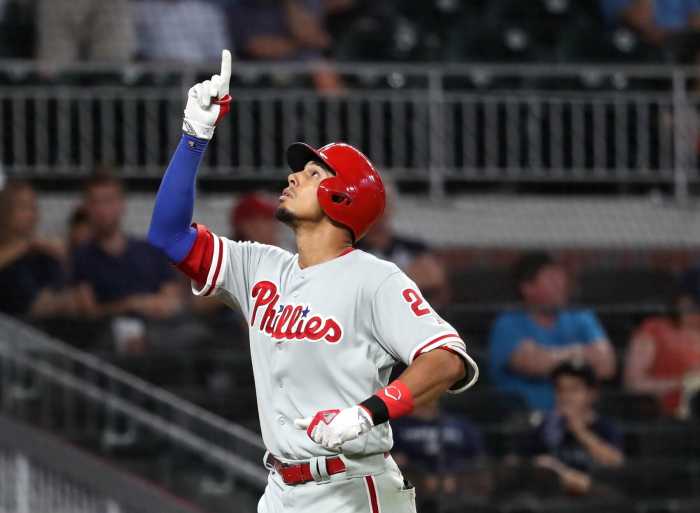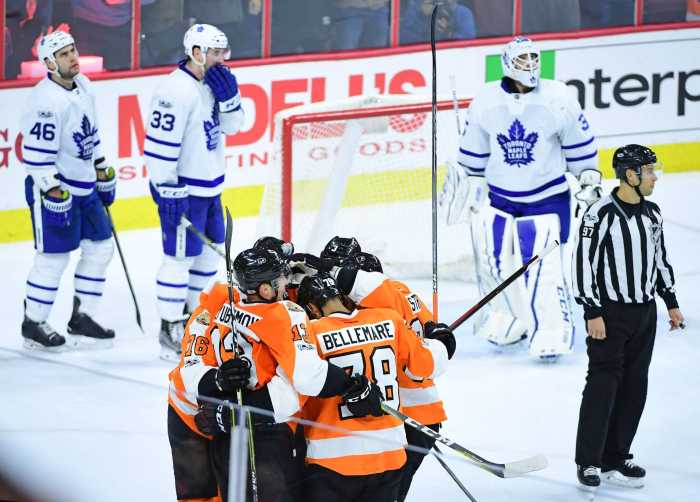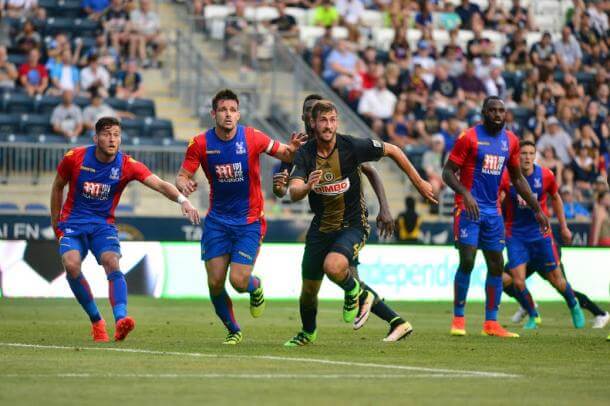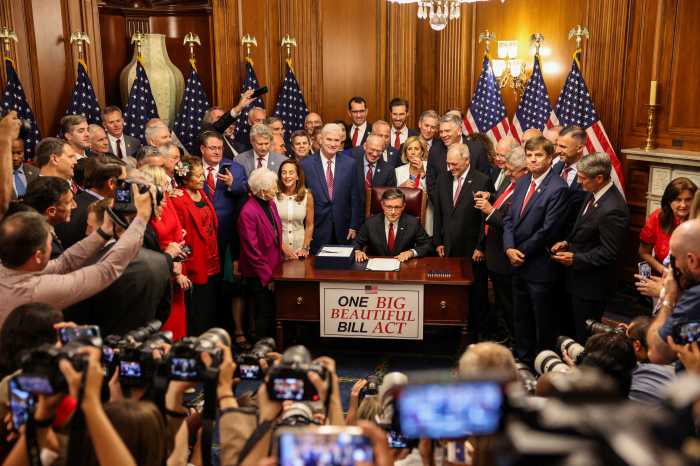The Phillies farm system is certainly known in big part because of its outfield depth. Mickey Moniak, Nick Williams, and Roman Quinn are #2, #5 and #7 respectively on MLB Pipeline’s top-30 team prospect rankings, and all are expected to be good, perhaps even great, outfielders for the team in the future. Further down the list are older players in Dylan Cozens (#9) and Carlos Tocci (#23) and younger, less polished guys in Cornelius Randolph (#10), Jhailyn Ortiz (#20), and Jose Pujols (#28). While all of these players have a good chance to contribute to the team sometime down the road, one player, who has shown consistent hitting ability in the minor leagues, is missing from the list: Lehigh Valley outfielder Andrew Pullin. (About an hour after I submitted this article, MLB Pipeline announced that Nick Pivetta had graduated from the prospect list, and replaced by Andrew Pullin. Pullin is now #30 on the list).
Pullin, who was drafted in the 5th round (#188 overall) in the 2012 draft, did not have any standout stats coming into the 2016 season. The left-handed hitter had moved up the ranks, playing rookie ball in 2012, A- ball in Williamsport in 2013, A ball in Lakewood in 2014, and A+ ball in Clearwater in 2015. However, to this point, Pullin never hit over .270 in a single season and only hit .258 in 2015, leading the club to keep him in Clearwater to start the 2016 season which disappointed Pullin, and he subsequently retired from baseball due to this combined with problems at home.
After spending the first month of the season at his home in Centralia, Washington, Pullin decided to come out of retirement, and rejoined the club in Clearwater. Pullin hit .293 in 36 games with the Threshers, earning himself a promotion to Reading. Pullin surprised everybody, hitting .346 in 46 games for the Fightin’ Phils. While some may have seen this as too small a sample size, Pullin has impressed again so far this season. After hitting .308 in 67 games in Reading with an OPS of .925, Pullin was promoted to Lehigh Valley to join the IronPigs team already stacked with prospects.
Pullin’s plate approach appears to be getting better by time, as his strikeout rate has decreased from AA last year from 17.5 % to 14.5%. His walk rate prior to his promotion was 7.4% after 6.3% in AA and 3.3% in A+ in 2016. That gives him a BB/K rate of 0.51, which is by far the best in his career. Pullin’s wRC+ was also well above league average in Reading, at 153. (With wRC+, basically all offensive stats are taken into account, and the league average is 100. Anything over 100 is above league average, and the contrary goes for anything below 100.) Pullin is consistently improving his hitting and approach, and is putting himself on the map as a potential contributing piece for the future. And, while it is worth noting that Pullin has struggled thus far in Lehigh Valley, the sample size of only 35 plate appearances is far too small to draw conclusions from.
When Pullin was just starting out in the organization, many recognized that he had an above average hit tool. However, despite his bat, there were and continue to be a couple of questions about his tools to become a major league caliber player. One big concern was how much power he would have as he progressed. In his first 3 years in the system, Pullin hit a combined 14 home runs, 31 doubles, and 8 triples. Pullin improved on these numbers the next two seasons, hitting 14 home runs each years and a combined 39 doubles and 6 triples. So far this year, Pullin has 15 home runs and 24 doubles, putting him on pace to well surpass his past bests. Conversely, his slugging percentage has been on the rise with these numbers, and was a very good .556 this year in Reading (6th in the league, behind 2 teammates in Mitch Walding and Scott Kingery, who has also been promoted to Lehigh Valley). These power numbers are good news for Pullin and the Phillies, and it will be interesting to see how they translate to the next level.
Pullin’s biggest issue has been and continues to be his defense. When they drafted Pullin, the Phillies wanted to move him to second base permanently. But after committing 24 errors in Lakewood in 2014, the Phillies gave up on Pullin at second, and he has remained in the outfield ever since. Pullin is a sub-average defender, which will likely keep him in left field, with first base not likely to be an option with Tommy Joseph and Rhys Hoskins both impressing this season, Left field is usually one of the team’s best offensive contributors, so Pullin will need to really impress to land a starting gig in the future with the team. This is highly unlikely due to the team’s depth at the position. Right now, he has Nick Williams, Dylan Cozens, Aaron Altherr, and Roman Quinn to compete with, and a few more guys highlighted by Mickey Moniak and recent first round pick Adam Haseley to come in the future. But if Pullin can keep hitting the way he has, he could be a contributor in the big leagues, even if it is a solid platoon bat/bat off the bench. While we hear all of the noise about Nick Williams, Scott Kingery, Rhys Hoskins, and other top prospects, keep watch for a under the radar Pullin call-up to the big leagues before this season is over.
*All stats courtesy of Fangraphs and Baseball-Reference
Mandatory Credit: Kim Klement-USA TODAY Sports

